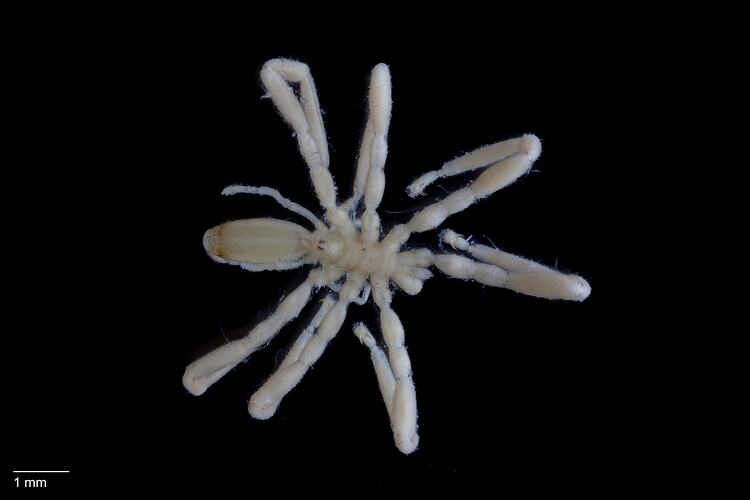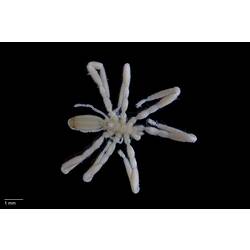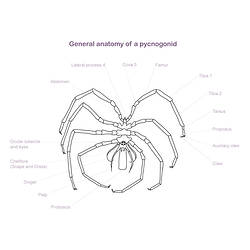General Description
Body with proboscis projecting outward from front, with the mouth at the tip. Central body (trunk) behind the proboscis, with a raised, rounded area (tubercle) bearing four eyes. Eight segmented walking legs attached to the sides of the trunk. Small abdomen behind trunk, not articulated at base. Leg span about 15 mm.
Biology
This is a cosmopolitan species, occurring in waters around the globe. In Victoria, all records are from beneath rocks and boulders typically associated with a silt substrate. Males carry the eggs, holding them between body parts called ovigers that hang under the animal.
Distribution
Worldwide. Southern Australia, including western and central Victoria.
Habitat
In sheltered areas, occasionally in tide pools along our exposed coastline, to depth of 2 m.
More Information
-
Animal Type
-
Maximum Size
15 mm
-
Habitats
-
Endemicity
-
Commercial
No
-
Conservation Statuses
DSE Advisory List: Not listed, EPBC Act 1999: Not listed, IUCN Red List: Not listed
-
Depths
Shore (0-1 m), Shallow (1-30 m)
-
Water Column Locations
On or near seafloor
-
Taxon Name
-
Scientific Author
(Dohrn, 1881)
-
Common Name
Pycnogonid
-
Other Names
Sea spider
-
Phylum
-
Subphylum
-
Class
-
Order
-
Family
-
Genus
-
Species Name
biunguiculata



